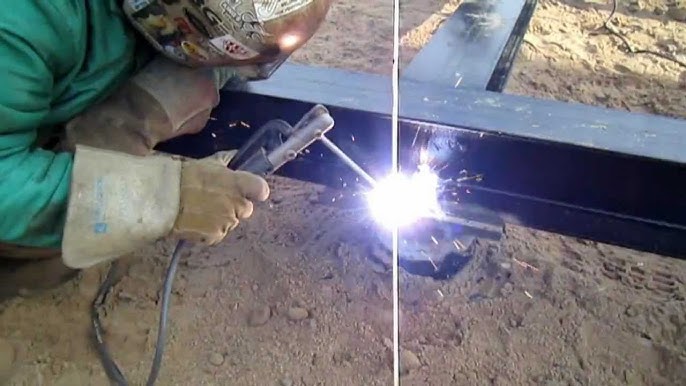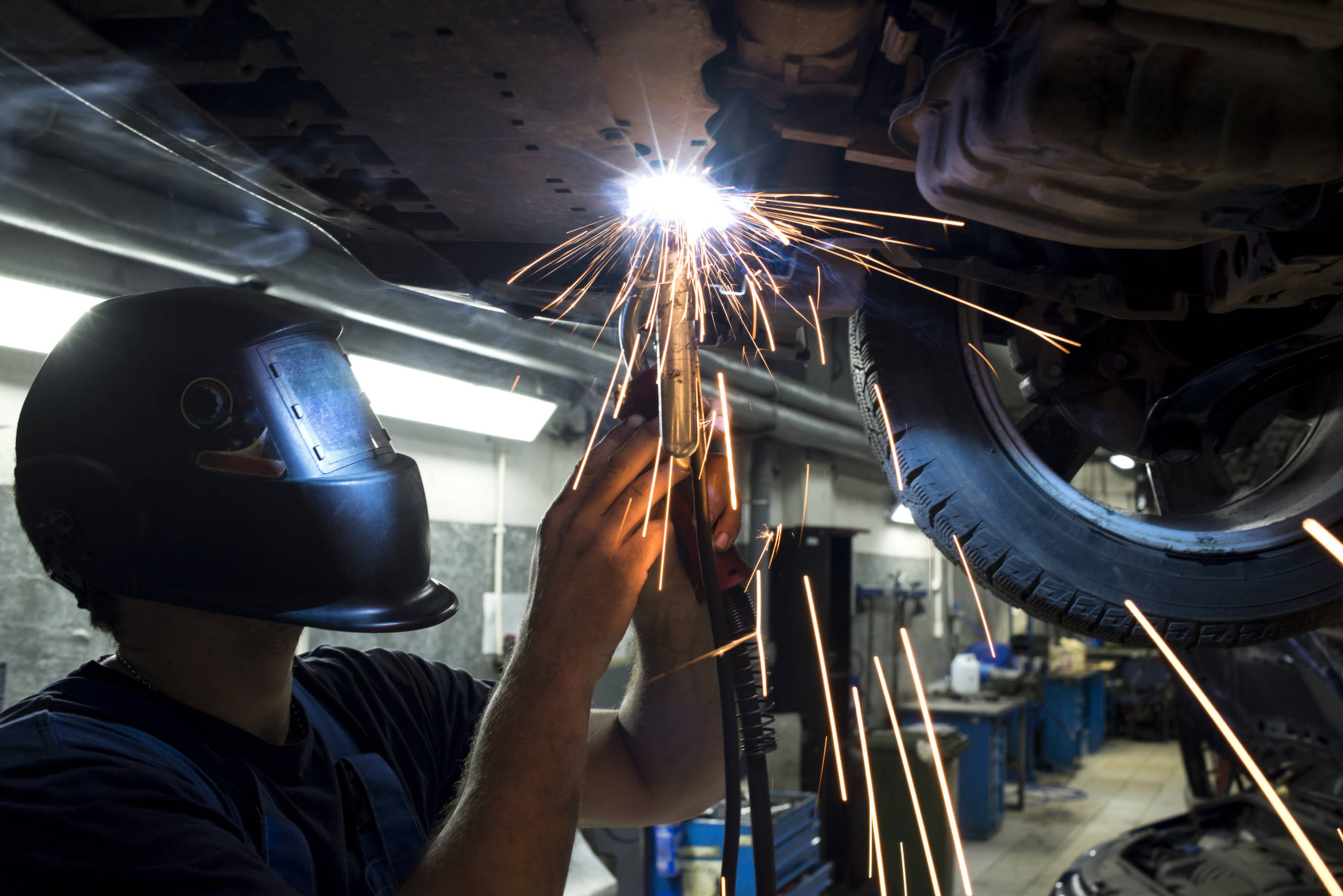Everything about Welding: Key Insights Into Techniques and Finest Practices for Success
Welding encompasses a selection of methods, each fit for specific materials and applications. Comprehending these methods, such as GMAW, SMAW, and TIG, is vital for achieving excellent results. The appropriate devices and security techniques can not be neglected. As prep work and troubleshooting play essential functions in the welding process, understanding these elements can greatly boost the top quality of the end product. What are the key factors that ensure an effective weld?
Comprehending Various Welding Techniques
Welding techniques encompass a variety of approaches, each fit to specific applications and products. Among one of the most typical techniques are Gas Metal Arc Welding (GMAW), Secured Steel Arc Welding (SMAW), and Tungsten Inert Gas Welding (TIG) GMAW, also known as MIG welding, is preferred for its speed and versatility, making it perfect for slim products. SMAW, or stick welding, is favored for its simpleness and efficiency in outdoor environments, specifically with thicker metals. TIG welding provides precision and control, making it suitable for intricate work and non-ferrous metals (Montana Mobile Welding and Repair Belgrade Fabrication). Each strategy has its distinct advantages and factors to consider, allowing welders to choose the very best technique based on the task's requirements, material type, and desired end results. Comprehending these techniques is essential for successful welding
Essential Welding Equipment and Tools
While numerous welding methods need specific skills, the appropriate equipment and tools are just as necessary for attaining top quality outcomes. Crucial welding devices includes welding machines, which vary depending upon the strategy-- such as MIG, TIG, or stick welding. Protective gear, including aprons, gloves, and headgears, guarantees safety and security and convenience throughout the procedure. In enhancement, clamps and fixtures help protect materials in location, ensuring precision in welds. Consumables like welding rods, cable, and shielding gas are likewise essential parts that affect the high quality of the weld. Additionally, tools such as mills and cutters promote surface area preparation and post-weld completing, contributing to a professional end result. Investing in high-grade devices ultimately boosts the effectiveness and effectiveness of welding jobs.
Safety Practices in Welding
Correct security practices are vital in the welding industry to safeguard workers from possible hazards. Welders have to put on appropriate personal safety devices (PPE), including safety helmets with proper shading, handwear covers, and flame-resistant clothes. Ample air flow is vital to decrease exposure to unsafe fumes and gases generated throughout the welding procedure. Furthermore, employees should be educated in the appropriate handling of welding tools to prevent mishaps. Fire safety and security steps, such as maintaining flammable materials far from the welding area and having fire extinguishers readily offered, are needed. Routine evaluations of tools and offices can aid identify prospective dangers before they cause mishaps. By adhering to these security techniques, welders can create a more secure working setting and lessen threats linked with their trade.
Preparing Products for Welding
Preparing materials for welding is an essential action that substantially influences the quality and honesty of the end product (Montana Mobile Welding and Repair Belgrade Fabrication). Proper prep work entails cleaning the surface areas to remove impurities such as oil, dust, and corrosion, which can jeopardize the weld. Methods such as grinding, sanding, or utilizing solvents are typically employed to achieve a clean surface area. Additionally, guaranteeing that the materials fit together snugly is necessary; voids can bring about weak welds. It's additionally essential to consider the alignment and positioning of the components, as this will certainly influence the convenience of welding and the last end result. Choosing the appropriate filler product and making certain compatibility with the base metals is crucial for achieving solid, resilient welds.
Tips for Getting High-Quality Welds
Achieving top quality welds needs focus to information and adherence to best methods throughout the welding procedure. Proper joint prep work is vital, making certain surface areas are free and tidy from pollutants. Selecting the suitable filler product and welding technique based on the base metals is vital for suitable bonding. Maintaining regular traveling rate and angle while welding can promote and prevent problems harmony. In addition, controlling warmth input is important; extreme warm can lead to warping and compromised joints. On a regular basis checking the welds during the procedure permits prompt adjustments if needed. Using ideal post-weld therapies, such as cleaning and tension relief, can improve the sturdiness and stability of the weld, eventually ensuring an effective result.
Troubleshooting Usual Welding Issues
Welding often presents obstacles that can affect the top quality and stability of the final item. Typical issues such as porosity, inconsistent weld grains, and getting too hot can develop, each needing details repairing techniques. Understanding these problems is necessary for welders to enhance their skills and achieve excellent outcomes.
Porosity Problems Described
Porosity can typically be neglected, it continues to be a vital issue in welding that can compromise the stability of a finished item. Porosity refers to the existence of tiny gas pockets within the weld grain, which can weaken the joint and lead to premature failing. This problem generally develops from contaminants, wetness, or inappropriate shielding gas insurance coverage during the welding process. To minimize porosity, welders must verify that the base products are completely dry and tidy, make use useful site of suitable protecting gases, and keep regular welding specifications. Routinely checking the tools and setting can additionally help identify possible concerns before they materialize in the weld. Attending to porosity effectively is crucial for achieving strong, resilient welds cored wire that meet quality standards.

Irregular Weld Beans
Inconsistent weld beads can significantly affect the high quality and stamina of a completed item. Various aspects contribute to this concern, including improper travel speed, inaccurate amperage settings, and inconsistent electrode angles. When the welder moves too rapidly, a grain might appear slim and do not have infiltration, while relocating too gradually can create excessive buildup. Furthermore, making use of the incorrect amperage can lead to either damaging or extreme spatter, both of which compromise weld honesty. The welder's technique, such as irregular lantern motion, can additionally lead to unequal bead look. To alleviate these problems, welders need to concentrate on maintaining stable, controlled activities and making certain appropriate tools setups to accomplish uniformity in their welds. Consistency is essential to attaining strong and reliable welds.
Getting Too Hot and Bending Issues
Too much warm throughout the welding process can cause significant overheating and contorting concerns, impacting the architectural integrity of the work surface. These problems commonly manifest as distortion, which can jeopardize placement and fit-up, making further setting up testing. Elements contributing to overheating include the option of welding specifications, such as voltage and travel rate, in addition to the sort of product being welded. To reduce these problems, welders should maintain constant traveling speed and appropriate warmth input while monitoring the work surface temperature level. Furthermore, preheating or post-weld warm therapy can aid reduce stresses triggered by fast air conditioning - Fabrication. Normal inspection and adherence to ideal techniques are essential in protecting against overheating and guaranteeing the longevity and integrity of welded frameworks
Regularly Asked Concerns
What Are the Job Opportunities in the Welding Sector?
The welding industry supplies varied job opportunities, including settings as welders, instructors, examiners, and engineers. Professionals can function in manufacturing, building, aerospace, and auto markets, profiting from strong need and competitive wages in different roles.
Exactly How Can I Boost My Welding Speed Without Compromising Quality?
To enhance welding rate without sacrificing high quality, one need to exercise reliable strategies, maintain devices, maximize settings, and enhance hand-eye coordination. Regular training and looking for responses can additionally considerably add to attaining much faster, top quality welds.
What Qualifications Are Available for Welders?
Various qualifications exist for welders, consisting of those from the American Welding Culture (AWS), the National Facility for Building Education And Learning and Study (NCCER), and various industry-specific organizations. These qualifications boost employability and demonstrate skill proficiency.
How Does Welding Impact the Properties of Metals?
Welding influences the residential properties of metals by changing their microstructure, which can check my reference cause modifications in hardness, ductility, and strength. Warm input and air conditioning rates throughout the process substantially influence these material attributes.
Can I Bonded Dissimilar Metals Together?
